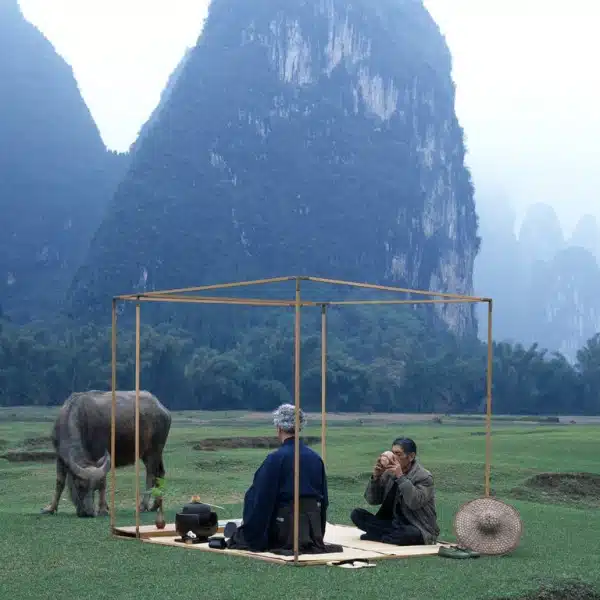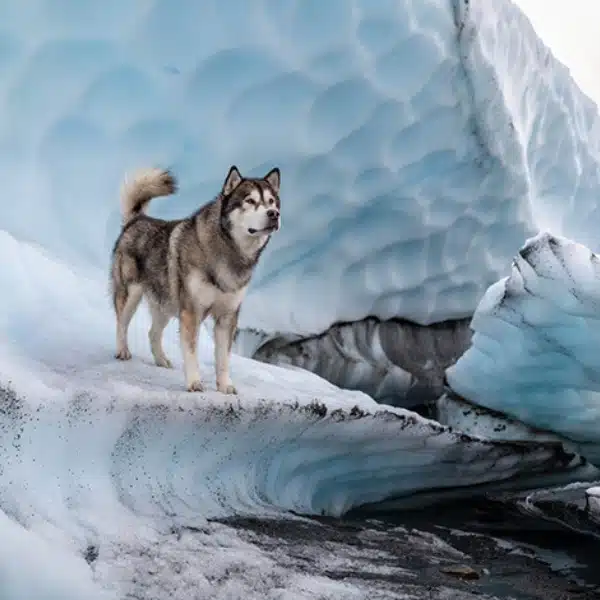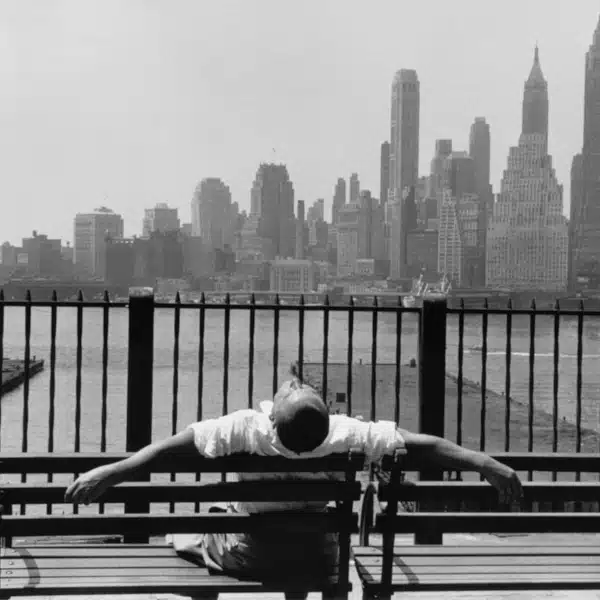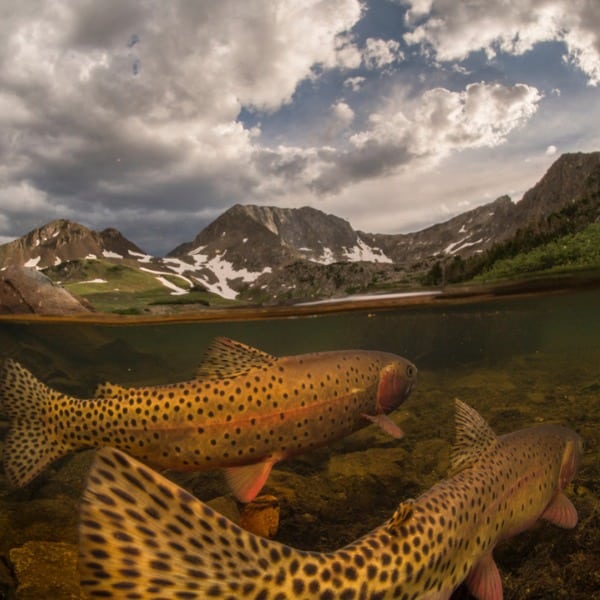At just one week old, English photographer David Anthony Hall was adopted into the family that would see him into adulthood. During that time, he had no contact with his biological parents–it was only later in his life that he would meet them. To fill the void that this absence caused, he formed a bond with family trees and their strong lineage in the landscapes of The British Isles. This symbolism fostered a deep connection to his photography and ultimately led to his life's work–capturing scenes of peaceful forests.
A love of trees has helped David with other aspects of his life. Unfortunately, he is no stranger to the perils of cancer, having had the disease weave itself through many of the lives in his family. In the wake of tragedy, David discovered hope in the tranquility of the natural world, and he would often find sanctuary in the forest after visiting his father in the hospital.
The desolate and often unwelcoming atmosphere of the medical environment inspired David to take matters into his own hands. He now produces large-scale prints of landscapes for hospice care facilities in the hopes of positively transforming the environment into a more welcoming place.
We were grateful to catch up with David for a Behind The Lens look into his photography!

Can you tell us a bit about your journey into photography?
I was introduced to photography as a teenager through a student teacher at school. He was a keen photographer with access to darkrooms outside of school and he would encourage us boys to bring negatives to print. Following subsequent school trips, he went on to show us how to shoot and develop film. My love for photography grew from there. The process first attracted me, but quickly I began to see the potential of the camera itself–initially as a way to explore my world and the people in it, but also as a mask. By holding the camera up to my face, I was rendering myself anonymous and creating a barrier between myself and the world around me. I was particularly taken with the idea that by being the photographer I would never have to be in the spotlight.
How would you define your style? How has your style evolved through the years?
‘Point, Shoot, Repeat.' Although I'm being somewhat flippant here, I've always been happiest working with what nature provides. I did work as a still life photographer and ran my own studio here in London for many years where I would have to control every aspect of my photography i.e. lighting, styling, art direction, props, set building, etc. But ultimately for me, commercial photography is soulless endeavor so I quit.
That was 16 years ago, and since then I have tried to develop uniqueness with my photography both in execution and presentation. I have enjoyed using the term ‘scale artist' to describe the larger-than-life works I produce. The focus of my work is predominantly woodland and trees and I believe my style is apparent in the installations and the images I continue to perfect. As an artist, I am concerned with positively affecting the atmosphere of a space where my large-scale images hang.


What are some of your interests?
Traveling, hiking, nature (ultimately the great outdoors, which is all fairly obvious), but I'm also very much interested in: ancestry, the human condition, the essence of existence, as well as my place in space and time! I see the human race as a super organism, much like trees. Although I'm not sure if history will remember mankind as fondly as it will trees.
Where do you call home?
I've lived in London for 26 years, however I've never considered it to be my home! I'm originally from Dublin in Ireland where I was adopted. My birth parents were Italian and rural Irish. Amusingly, my siblings and I share parents from Ireland, Italy, England, and America, but being raised in Ireland means I have friends and family living in every corner of the world. “Home” for me in a flag waving, geopolitical, or cultural sense is quite an abstract concept.


How has your relationship with nature inspired what you create and, ultimately, has that relationship changed how you see the world?
When I started taking pictures I was very much concerned with ancestry (my ancestry). I would photograph the people of Dublin and wonder if I had inadvertently captured a blood relative in my pictures. In a way, nature played no part in my life until the intervention of the Catholic Church; my existence officially began when I was placed with my adoptive parents at six days old.
After being uncomfortable with street photography as a teenager, I abstracted the notion–I decided if I couldn't deliberately study my blood ties with any degree of certainty, I would turn my attention to the landscape, confident that my relatives were tied to that landscape. I found this to be a more satisfying exercise, and I expanded on the idea by going back through history from contemporary graveyards / churches to castle ruins and fortifications on to ancient monasteries and burial sites.
This process took me back to photograph many of the Neolithic tombs that are scattered across the landscape of Ireland and that is how I found myself in nature. Over a period of many years I revisited many of these locations, from teenager through art student and on to still life photographer living overseas. It was from this process that I became an observer of nature itself, but particularly the trees and woods. I began to consider the comparisons that can be drawn with ourselves and these ancient and individual forms.
The power of nature became a central part of my philosophy. Nature is beyond dogma; trees themselves are a physical bridge between us and our earthly origins, themselves dating back hundreds of millions of years. They survived the extinction of the dinosaurs and are central to the rise of Man and may well be around long after our fall. Trees collectively become a habitat supporting life, in many ways they are our planets vital organs; storing carbon, breathing oxygen and recycling water not to mention the nursery of our ancestors. They also provided us with the raw material for the built environment and somewhat less fortunately are a key ingredient in the fossil fuels which has driven our success.
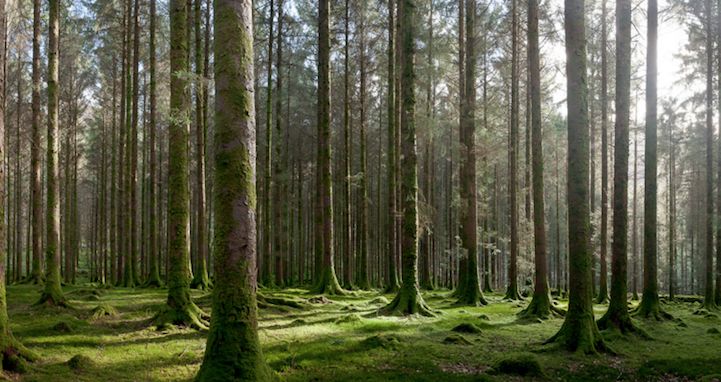

I'm sorry to hear that cancer has woven itself through the lives of your friends and family, I'm so sorry for your loss. Has coming face to face with mortality influenced your path as an artist?
Yes, sadly it's now a fact of life that half of us will be diagnosed with some form of cancer during our lifetime. In my case, both my parents; and in my father's case, every deceased member of his family has died of cancer. Ultimately, these facts are the reason I am an artist today. I had previously dedicated my life to making money, having status symbols and generally all the trappings of the capitalist consumer society that touches most of us on the planet.
Mortality brings a finality that no amount of money or possessions can fix, and it wasn't until my early thirties that I had an epiphany–to cut a long story short, the whole adoption thing remained unresolved and I found myself very unhappy and still having issues related to identity. So having previously resisted, I finally met both my biological parents. All in all, it was a positive experience, which served to change the course of my life in a way I could never have foreseen. Sadly, just a few years into us getting to know my father, he was diagnosed with lung cancer. I used my photography as an excuse to be in close proximity to him while he underwent chemotherapy and I would invariably take off to the woods following visits to the hospital.
These visits reminded me of visiting a dear friend, Margaret Browne, who died of cancer 20 years before. To say I have a poor relationship with cancer is putting it mildly, but also it affects how I viewed hospitals and hospices. I saw in the case of my father, a man who died very rich in monetary terms but had nothing. When all was said and done his lasting legacy has thus far been a series of court cases from Italy to Ireland where his family squabbles over his millions, in Ireland alone they have clocked up over 20 days in the Supreme Court of Ireland and they are still not finished! In Italy, his sister was convicted of forgery and even though she has died, his estate is still tied up with the courts. In life, Tony himself advised me not to make the same mistakes he made in particular he seems to lament not having put down any roots or having any children and not having had achieved anything of real value.

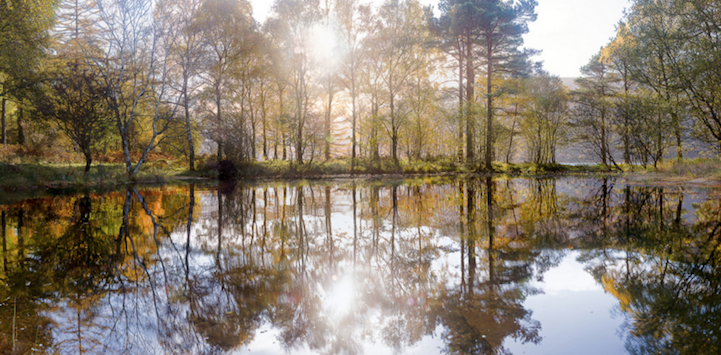
Your work often hangs permanently in hospice care facilities, can you tell us the evolution of this idea and how it came to fruition?
As a consequence of supporting loved ones through their cancer treatment, one thing that struck me was how very little had been done in the decades since Margaret died to make these institutions more welcoming for all who entered them. Ultimately, I found I had a real problem stepping over the threshold of these buildings and subsequently through the development of my work I realized I could do something about this. My images are observed from nature, particularly trees and woodland, giving an escape into the open without leaving the room. The prints are deliberately large, deriving impact from their sheer scale; they can be viewed up close–with each look revealing new details–while from afar they present vistas that entice the entire line of sight, a window through which to escape.
The effect of these images on a medical environment is tremendous; they provide a brief moment of reflection, quieting the mind in what can be a stressful environment for all concerned, whether it be patients, visitors or staff. The NHS Forest scheme has brought a terrific amount of research to light regarding the benefits of seeing nature, particularly woodland, in a medical environment, stating “trees have been found to enhance mood, improve self esteem and lower blood pressure.” Nature has long been proven to encourage recovery, inspire a positive frame of mind, but, what is more important, it is a subject that provides a universal and subconscious appeal, perfect for medical environments.
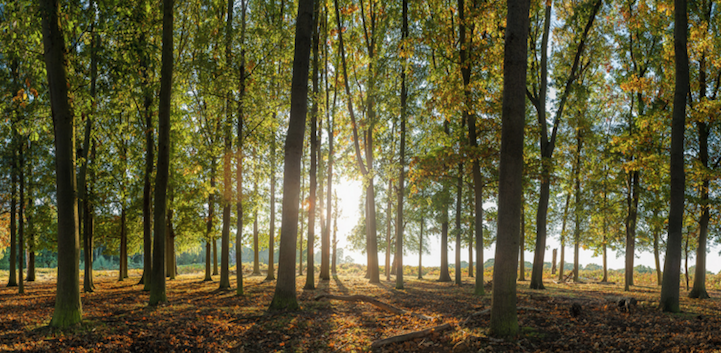
Do you think art, photography in particular, helps to make a more comforting hospice environment?
Absolutely, however, it seems it is very hard to quantify and therefore not budgeted accordingly. Most clinical studies relate to the effectiveness of drugs and not environment, which is where the funding goes. Don't get me wrong–a lot of work has gone into making medical facilities more welcoming. For me, photography plays an important part of creating a cathartic atmosphere with universal appeal, compared to abstract art. I previously wrote a paper on the importance of building new facilities with art in mind at the design stage rather than waiting until the building is finished before commissioning art. We can save money and that way get more art installed, because retroactively fitting it costs more. It should be a collaborative approach between the architect and the corporate art specialists or in fact the artists themselves.
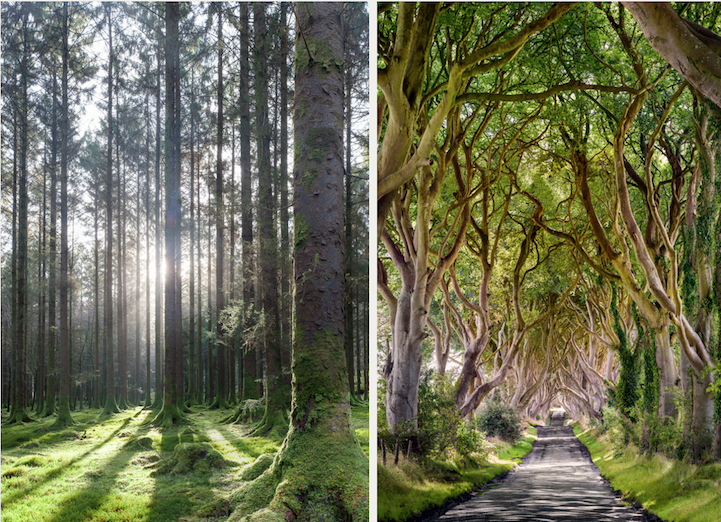
How much planning goes into a shoot? Is the process more organic when you come upon a location you like?
Planning and repetition is everything, I love what I do so there its no chore revisiting locations. Sometimes, it takes years to get an image but that can itself be an organic process where by the picture is revealed over a period of time. Other times the picture is presented on the first visit but I still like to revisit a number of times before concluding my study.
Where have you traveled to find the locations and where has been your favorite forests to shoot?
I wouldn't say I go out of my way to travel internationally as I have strong ties to mainland Europe and the British Isles. I have been lucky enough to visit the West Coast of America a couple of times last year, and the trees of Sequoia, Redwood and Olympic National Parks made quite an impression on me. I often imagine long-lived trees as time travelers and being among the ancient trees on the west coast is the closest I've come to meeting my maker.


Do you use artificial or natural light? Do you have a favorite time of day to shoot?
I use natural light, be it moonlight or sunlight I don't restrict myself to any particular time of day but I do calculate the prime position of the light source in advance. I love that the sun and moon move constantly throughout the year giving endless opportunities for those that are patient enough.
Is there an overall message you would like your photos convey?
I go to great lengths and make ridiculously large pictures but I'm not trying to preach, I simply present a window for the viewer to step into–to reconnect with nature which is something lacking with the increasingly urban population that modern life imposes on us. I would be satisfied if something would linger among the audience after the initial encounter with my work. As I have stated already, I like to use these images to create a positive atmosphere in medical environments and for me the work goes very deep into understanding the questions I set out to answer relating to the human condition, existence, as well as my place in space and time!
I am convinced that as trees exist on such a different timescale–in that they are slow growth–they also operate in different dimension that we can't comprehend. If I trace my family back four generations starting with my son, I can't even get further than the twentieth century; but within walking distance from my home in London is a tree that was alive before the Renaissance, and a trip to Sequoia National Park allows me to touch a tree that was alive before Buddha, Jesus and Mohamed. Go back four generations in that context and we are at the last Ice Age–trees predate dinosaurs by some sixty million years and they roamed the Earth from 180 to 60 million years ago!
What challenges have you faced while creating?
Time, there seems like an infinite amount of it but alas, I only have so little and already I used up most of it.


What's a must have in your gear bag?
I have a compact lightweight folding stool, once I find a specific spot I setup the stool and without my camera or tripod I like to just sit and bathe in the moment. The process of taking a picture can be quite long and drawn out so I kind of plant myself for a time which gives me time to consider all sorts of eventualities (I guess some might call it meditation).
How much post processing goes into a completed photo?
This is where things get complicated in some respects, as I like to leave a very long period of time between taking a picture and actually finalizing it. Initially, I may do some quick adjustments, blog it, and subsequently I will come back to it, but it's the location and not the picture I'm drawn to. I may decide to revisit, re-edit or simply reprocess the original images. I will usually set them aside and rediscover them again and again. Then one day, I will either work an image up to completion and/or revisit the location or start the process all over again. Often shots come quickly which is why I deliberately slow the process down–the time-gap is important as I am often trying to recapture an intensity in the finished image that I felt at the moment I photographed.


What are your plans for the future? Any upcoming projects?
I've so enjoyed visiting the West Coast of America, I would love to get gallery representation there so that I can continue my travels and add to my knowledge and understanding of its rich arboreal history.
Do you have any advice for aspiring photographers?
Follow your instincts, take pictures everyday, don't sell yourself short, don't sell your pictures cheap, don't depend on making money from photography, surround yourself with good people, shoot what you are passionate about and remember: life, love and time are the most valuable things we can give or receive.
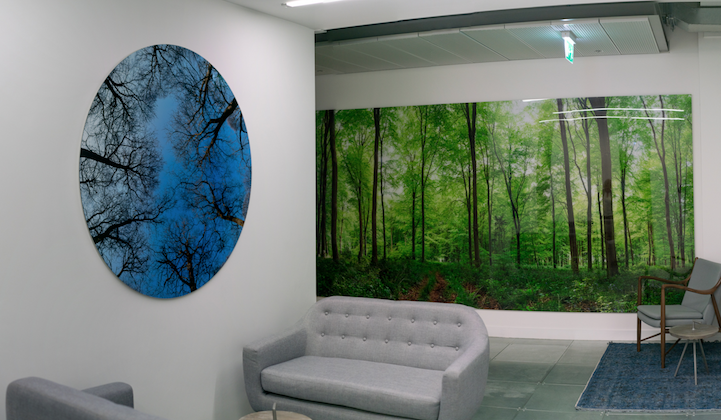

Thank you so much David! If you would like to stay up-to-date with this talented photographer's work please visit his website and Facebook page.
Are you a photographer? Would you like to be interviewed for our Behind The Lens series? Leave your website in the comments below!












































































